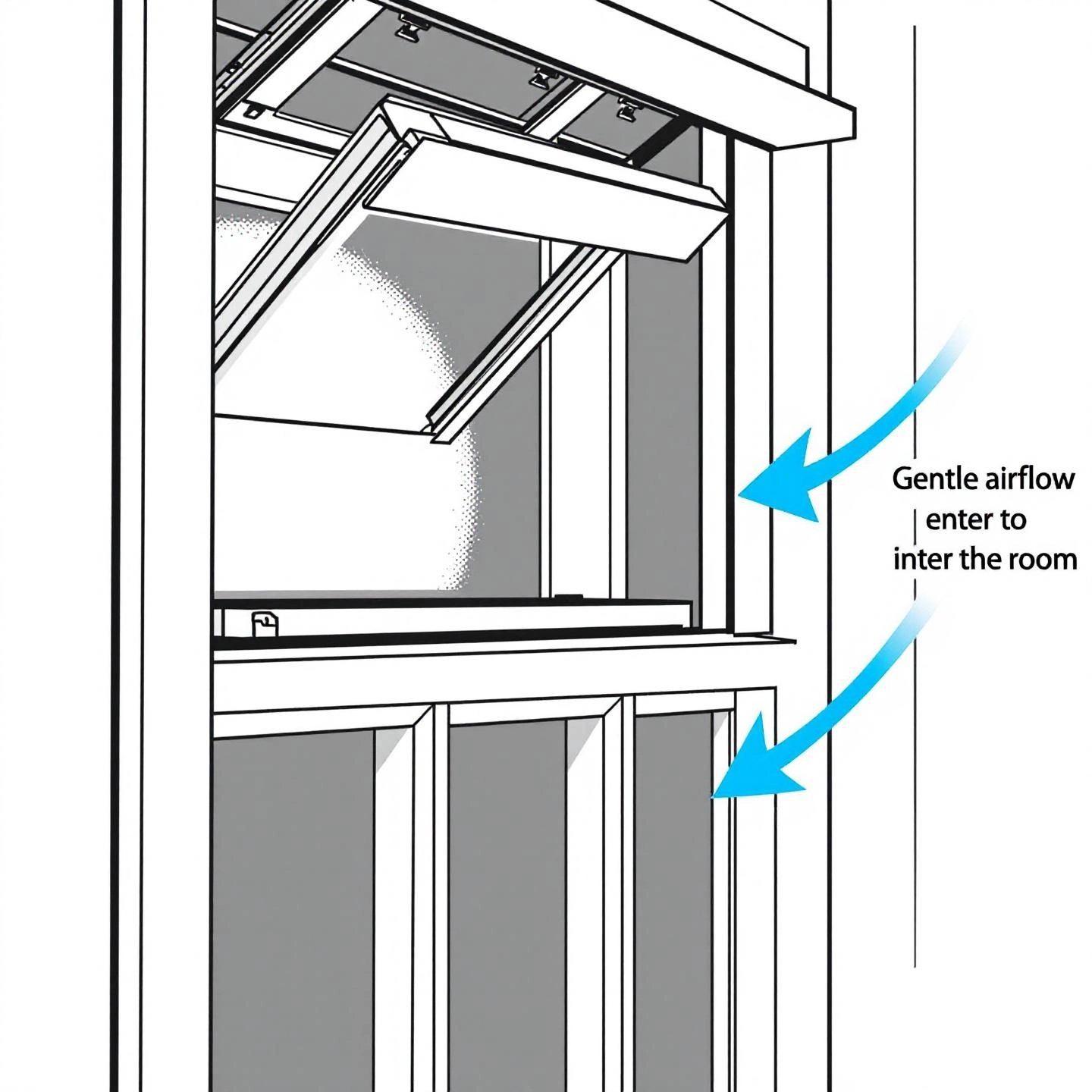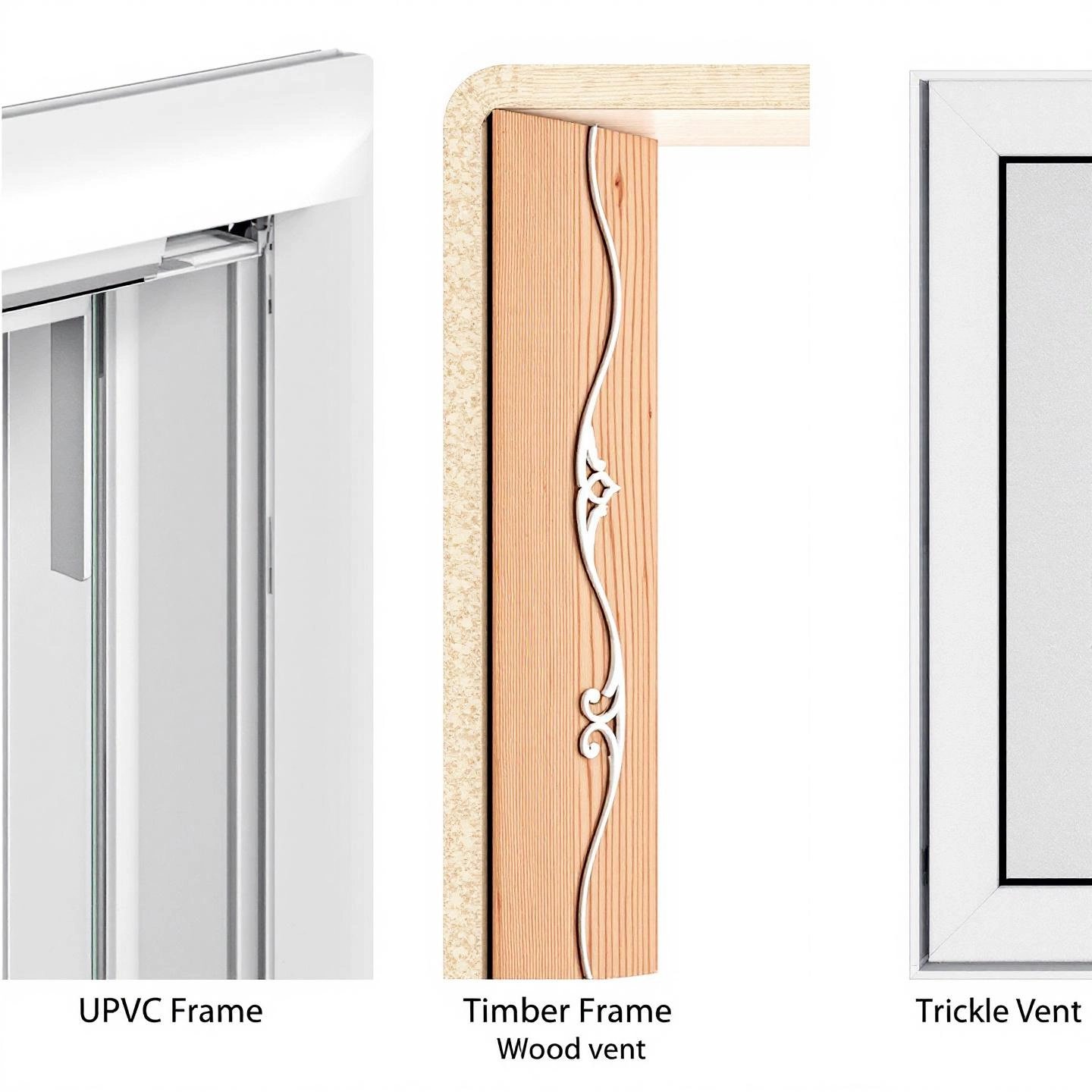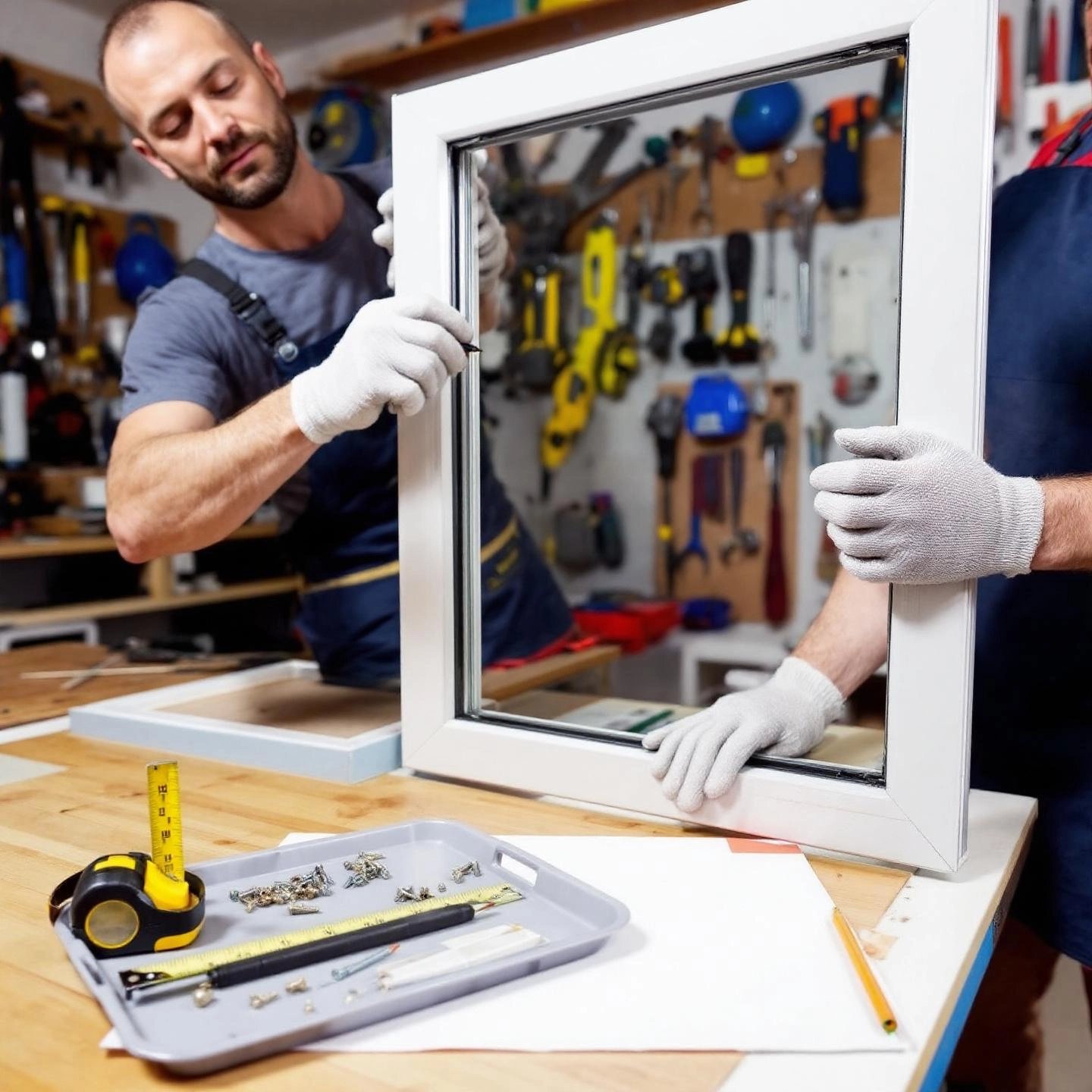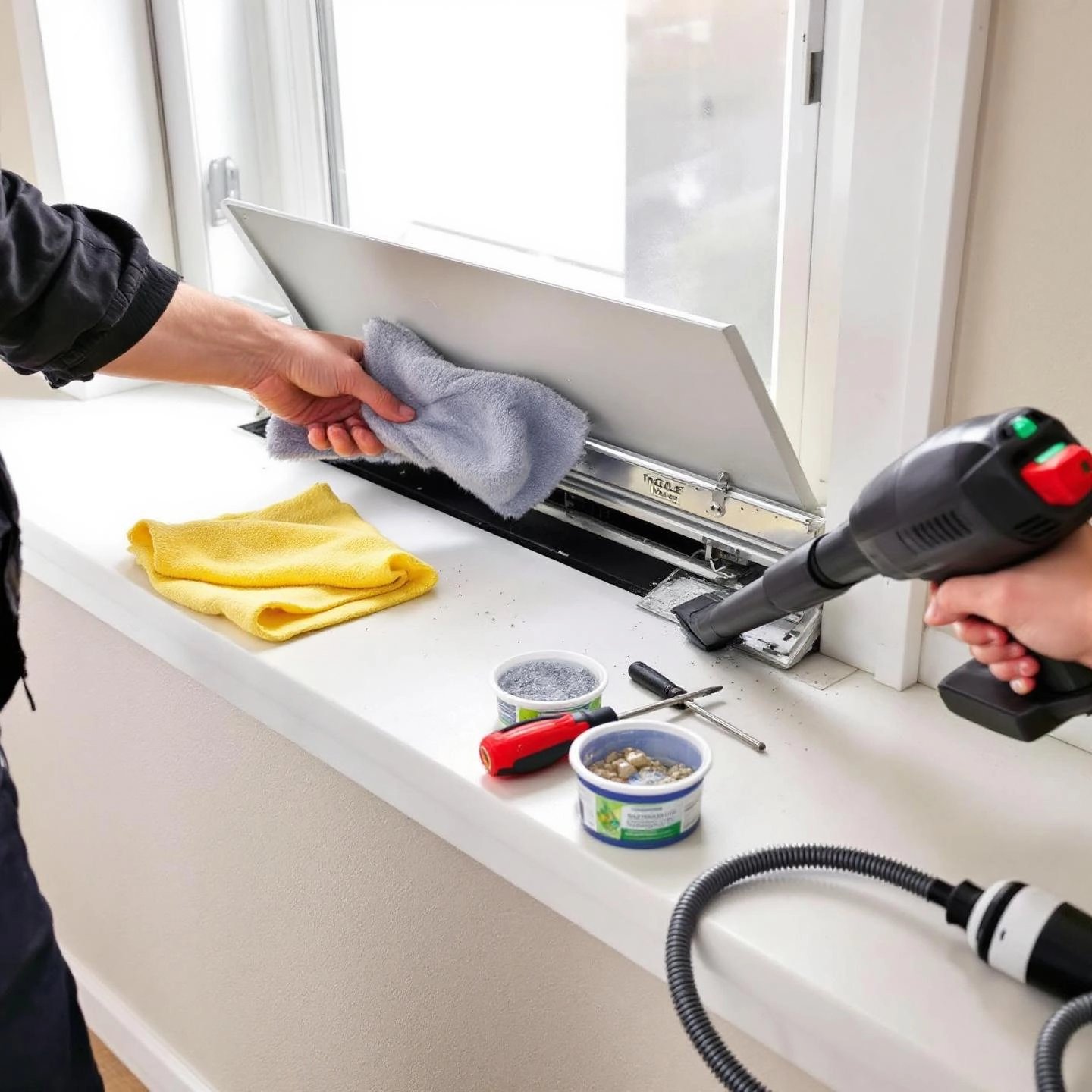
Ever noticed water droplets forming on your windows or a musty smell in a closed room? These are classic signs of poor ventilation. As homes become increasingly airtight in the quest for better energy efficiency, they often lose the natural airflow that older, draftier houses provided. While this helps with heating and cooling costs, it can inadvertently trap moisture and indoor pollutants—creating the perfect environment for condensation and mold.
This is where the window trickle vent steps in. Think of it as a small but mighty ally in your home's fight for fresh air. These subtle, adjustable openings—also called background ventilators—are built into window frames to allow a continuous, controlled flow of outdoor air inside, even when your windows are closed. The result? Improved air quality and less risk of moisture-related problems, all without sacrificing your home's insulation or security.
Why is this so important?
Throughout this guide, you’ll discover:
Ready to master the basics of healthy home ventilation? Let’s explore why a simple trickle vent could be the smartest upgrade you make this year.

Ever looked up at the top of your window frame and noticed a slim, unobtrusive slot or grill? You might have wondered, "What is a trickle vent and why is it there?" If so, you're not alone. These small, built-in features are easy to overlook, yet they play a vital role in maintaining a healthy indoor environment—especially in today’s well-sealed, energy-efficient homes.
A window trickle vent is a narrow, adjustable opening integrated into the upper section of a window or door frame. Its primary function is simple but essential: to provide a constant, low-level flow of fresh air into your home, even when the main window is shut. Unlike cracking a window open, a trickle vent delivers background ventilation without compromising security, insulation, or comfort.
To better understand how these vents work, let’s break down their main parts:
Imagine an annotated diagram here: you’d see the vent placed at the top of the window frame, with arrows showing air entering from outside, moving through the slot, and diffusing gently into your room.
It’s surprisingly straightforward. When the vent is open, outdoor air is drawn in through the external grille, passes through the slot in the frame, and enters your living space via the internal vent. The flow is gentle—just enough to refresh the air and help prevent excess moisture or pollutants from building up, but not so much that you feel a draft or lose significant heat.
Most modern trickle vents are adjustable. You can slide or tilt the control to regulate how much air comes in, tailoring the background ventilation to your needs and the season. Some designs are even pressure-equalized or thermally broken to reduce drafts and prevent condensation on the vent itself.
In summary, a trickle vent is a simple yet highly effective component of a window ventilation system. It provides the "background breathing" your home needs to stay fresh, dry, and healthy—without the downsides of open windows or complicated mechanical systems. Next, we’ll look at why these vents are so critical for indoor air quality and comfort.
Ever wondered why your home sometimes feels stuffy, or why you spot condensation on your windows even though you rarely open them? The answer often lies in how well your home breathes. As modern homes become more airtight for energy efficiency, the need for effective, passive ventilation has never been greater. This is where the benefits of trickle vents truly shine.
Imagine living in a house where fresh air quietly circulates, moisture never lingers, and you don’t have to choose between comfort and security. That’s the promise of a well-installed window trickle vent. By providing a steady, controlled flow of outdoor air—even with windows closed—these small devices help improve indoor air quality and protect your home from hidden threats.
Picture this: You wake up on a chilly morning, windows closed, but the air in your bedroom feels fresh and dry—not muggy or musty. Or, after a steamy shower, your bathroom mirror stays clearer, and there’s no lingering damp smell. These everyday comforts are the direct result of effective passive ventilation.
In short, the benefits of trickle vents go far beyond simple airflow. They are a quiet but powerful way to improve indoor air quality, protect your home from hidden moisture damage, and support a healthier, more comfortable lifestyle—all while meeting modern building standards. As we move forward, it’s important to understand not just the health and comfort advantages, but also how trickle vents fit into the bigger picture of building regulations and compliance. Next, we’ll explore what the rules say about installing these background ventilators in your home.
When planning a window upgrade or building a new extension, you might wonder: Are trickle vents mandatory? Or, what do the building regulations for window vents actually require? The answer depends on where you live, but the trend is clear—ventilation standards are tightening, and trickle vents are increasingly a must-have in modern homes.
Imagine you’ve just installed beautiful, energy-efficient windows. They seal out drafts and noise, but they also trap moisture and pollutants inside. Building regulations—like the UK’s Part F—exist to prevent these issues. They require background ventilation to keep indoor air fresh, reduce condensation, and protect your health and property. Trickle vents offer a simple, passive way to meet these requirements without sacrificing comfort or security.
"Failure to comply with building regulations can result in enforcement action, fines, or even demolition orders."
As you plan your next window project, understanding the building regulations for window vents isn’t just about ticking a box—it’s about creating a home that’s safer, healthier, and built to last. Next, we’ll help you choose the right trickle vent for your window frame material, ensuring both compliance and comfort.

Ever stood in front of your new windows and wondered, “Which trickle vent is actually right for these frames?” With so many window trickle vent types on the market, it’s easy to feel overwhelmed—especially when your windows are made from different materials like aluminum, uPVC, or timber. The good news? The perfect vent exists for every frame, and making the right choice can mean the difference between seamless aesthetics, lasting durability, and effortless installation.
Imagine installing a modern, slimline vent on a classic timber sash, or a bulky plastic vent on a sleek aluminum frame. Not only might it look out of place, but it could also impact performance or even void your warranty. That’s why matching the vent to your window frame material is crucial—for both appearance and function.
| Frame Material | Key Considerations | Recommended Vent Type |
|---|---|---|
| uPVC |
|
Through-frame or over-frame uPVC trickle vents (slimline, color-matched for discreet look) |
| Timber |
|
Timber or composite vents; slim, natural-finish options that blend with wood grain |
| Aluminum |
|
Specialized aluminium window trickle vent—anodized or powder-coated for durability and color match |
If you have aluminum frames, you’ll notice that standard plastic vents can clash with the sleek, metallic finish. This is where specialized manufacturers like Shengxin Aluminium stand out, offering high-quality, purpose-built vents that match your frame’s profile and finish. These vents are engineered for strength, weather resistance, and a seamless look—ideal for both new builds and retrofits. Their slim, unobtrusive design preserves the modern lines of your aluminum windows while delivering reliable passive ventilation.
Live near a busy street or in a noisy neighborhood? Acoustic trickle vents are a smart upgrade, regardless of frame material. These advanced vents use sound-absorbing materials and internal baffles to reduce external noise while maintaining healthy airflow. They’re particularly valuable in urban settings or for bedrooms and living spaces where peace and quiet matter most.
By carefully matching your vent to your window frame material—and considering advanced options like acoustic vents—you’ll ensure your passive ventilation solution is both effective and attractive. Up next, we’ll tackle how to address unique challenges when adding trickle vents to sash and double-glazed windows, so you can keep every room fresh and comfortable.
Ever wondered if adding a trickle vent to a classic sash window or a modern double-glazed unit is more complicated than with a standard window? You’re not alone. Many homeowners worry about spoiling their window’s appearance or compromising insulation. The good news is that, with the right approach, trickle vents for sash windows and double glazed window ventilation can be both effective and unobtrusive.
Sash windows are loved for their timeless elegance and are often a defining feature in period homes. But how do you add ventilation without ruining their look?
Imagine standing in your living room, admiring your sash windows—now with a hidden vent that keeps the air fresh and the frames as beautiful as ever. That’s the power of thoughtful vent design.
Double glazing is prized for its insulation and energy efficiency. But you might ask, “Will adding a trickle vent create drafts or weaken my window’s performance?” Here’s what you need to know:
By choosing the right vent and ensuring proper installation, you can maintain all the benefits of double glazing—energy efficiency, sound insulation, and security—while adding essential background ventilation.
Worried about unsightly vents or tricky installations? Today’s market offers a range of solutions that prioritize both function and form. Whether it’s a sash window in a Victorian townhouse or a double-glazed unit in a contemporary home, you’ll find vents that are:
It’s easier than ever to keep your home healthy and comfortable—without sacrificing style or performance. Next, we’ll explore how to retrofit trickle vents to existing uPVC windows, making sure even older frames can benefit from modern ventilation solutions.

Thinking about retrofitting window trickle vents to your existing UPVC windows? It might sound daunting, but with a little planning and the right approach, you can add a trickle vent to a UPVC window and enjoy fresher air and a healthier home. Let’s break down what you need to know before picking up your drill.
Absolutely! Most modern UPVC frames are suitable for retrofitting window trickle vents, provided there’s enough space at the top of the frame. This upgrade is especially useful if you’ve noticed condensation, stuffy air, or lingering odors in your home. Retrofitting is also a smart way to meet current ventilation standards without replacing your entire window—saving both time and money.
Before you dive in, take a close look at your window:
Gather everything you need before starting. Here’s a handy list:
Here’s a quick outline of the steps involved:
Precision is key. Careful measuring and drilling help prevent accidental damage to your window and ensure the vent works as intended. If you’re unsure or uncomfortable with DIY, don’t hesitate to call a professional installer. The next section will walk you through each installation step in detail, so you can tackle the job with confidence.
Ready to breathe new life into your home by installing trickle vents? Whether you’re tackling a retrofit or fitting vents to new windows, a careful approach ensures effective, long-lasting ventilation. Sounds complex? It’s actually a straightforward process—if you follow each step and take the right precautions. Imagine the difference: fresher air, less condensation, and a healthier living space, all from a small but mighty upgrade.
By following these steps, you’ll ensure your window trickle vent installation is secure, effective, and built to last. Remember: precise measuring, the right tools, and a little patience make all the difference. Once your vents are in place, you’re well on your way to a fresher, healthier home. Next, we’ll cover how to keep your new vents working at their best with simple maintenance and timely replacement tips.

When was the last time you checked your window vents? If you’re like most homeowners, it’s easy to forget about these small but vital features—until you notice a musty odor, persistent condensation, or a vent that just won’t open. Regular upkeep is the secret to ensuring your window trickle vent continues to deliver fresh air all year round. Let’s break down how to maintain window vents for peak performance and recognize when it’s time for a window trickle vent replacement.
Imagine your vents as the “lungs” of your home—when they’re clean and clear, your indoor air stays fresh and healthy. Here’s how to keep them working their best:
Even with regular care, vents can wear out or become damaged over time. Here are signs you might need a window trickle vent replacement:
When it’s time to upgrade, don’t settle for a generic fit. The right replacement should match your window’s material, slot size, and aesthetics—ensuring a secure fit and optimal performance. For example, if you have uPVC frames, look for slim, color-matched vents designed for effortless integration. For aluminum windows, durability and a seamless finish are key.
Specialized suppliers, such as Shengxin Aluminium, offer a range of high-quality vents engineered for both new installations and replacements. Their products are designed with weather resistance, ease of use, and long-term reliability in mind—so you can trust your home’s ventilation for years to come.
Maintaining your vents isn’t just about airflow—it’s about protecting your home from condensation, mold, and poor air quality. A little regular attention keeps your system running smoothly, while timely replacement ensures you never miss out on the benefits of fresh, healthy indoor air. In the final section, we’ll recap the essentials and help you confidently choose the best solutions for your home’s ongoing comfort and well-being.
Imagine stepping into your home and instantly noticing the air feels fresher, rooms stay drier, and there’s a comfortable balance—no stuffiness or lingering odors. That’s the everyday benefit of getting your window ventilation right. Throughout this guide, you’ve explored the ins and outs of window trickle vents: what they are, why they matter, how to select the right type, and the best ways to install and maintain them. But what does it all add up to for you as a homeowner?
When you invest in a quality vent, you’re not just ticking a box for building regulations—you’re making a lasting improvement to your everyday comfort and well-being. High-performance solutions, such as those available from Shengxin Aluminium, are designed for durability, easy adjustment, and seamless integration with modern window frames. Features like quiet operation, weather resistance, and a slim profile mean you get effective ventilation without compromising your home’s style or peace of mind.
By understanding, selecting, installing, and maintaining the right window trickle vent, you’re investing in a healthier, more comfortable living space for years to come. Ready to improve home ventilation and enjoy peace of mind? Now’s the perfect time to make sure your windows—and your well-being—are truly covered.
Most new and replacement windows are required by modern building regulations to include trickle vents, especially in airtight homes. These vents help maintain healthy indoor air quality and prevent condensation. If you're upgrading windows, check local codes or consult with a certified installer to ensure compliance.
A trickle vent is a small, adjustable opening built into a window frame that allows a continuous, controlled flow of fresh air into a room. It helps reduce moisture, prevents mold, and boosts indoor air quality without compromising security or insulation.
Yes, trickle vents can be retrofitted to many existing windows, especially uPVC frames. Before installation, assess the frame's structure and available space. Proper tools and careful installation help avoid damage and ensure effective ventilation.
It’s recommended to keep trickle vents open year-round, including in winter. They allow essential background ventilation, helping to prevent condensation and maintain air quality, with minimal impact on energy efficiency when properly installed.
Select a vent that matches your window frame material—uPVC, timber, or aluminum. Consider aesthetics, durability, and features like acoustic dampening if noise is a concern. For aluminum frames, specialized options such as those from Shengxin Aluminium ensure a seamless fit and reliable performance.
 Интернет Сервис
Интернет Сервис 0086 136 3563 2360
0086 136 3563 2360 sales@sxalu.com
sales@sxalu.com +86 136 3563 2360
+86 136 3563 2360